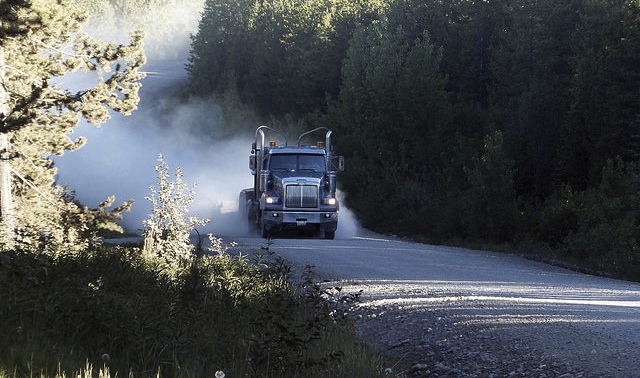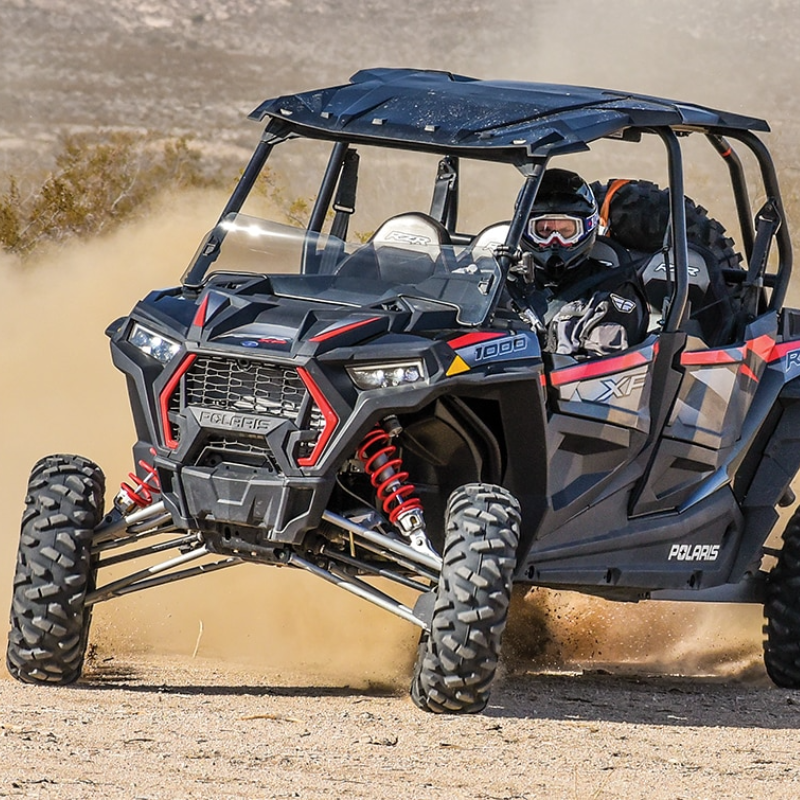Sunshine and warmer weather have sparked another season of backcountry fun, particularly if you are an ATV user in British Columbia. With safety and stewardship considered a backbone for motorized recreation, here are some tips to consider when navigating B.C.’s resource roads, which include logging roads.
Road use safety tips
- Drive with your headlights on at all times, making sure they are clean and operating as they should. See and be seen! Even in daylight hours, headlights give oncoming traffic a heads-up, letting them know that you are on the road in front of them.
- Keep your windshield clean and in good repair. It takes but a moment of sun glare on a dusty windshield to distort navigation. Scratches on a poly windshield attract and collect dust, preventing a clear view. Use a dust-repelling spray like SC1 and a microfibre cloth to keep it clean without damaging the windshield.
- Mirrors are an excellent addition to your ATV or side-by-side, giving you a clear picture of what is behind you without having to continually shoulder check. Continual shoulder checking, or worse, not checking behind at all, can create a no-win situation when riders are unaware, then surprised, by the traffic behind them.
- Stay on your own side of the road and assume there is oncoming traffic. Blind corners can create a deadly situation for collision between ATVs and other users of the road. You are smaller than a truck—remember that—and realize the consequences should there be a collision. There is no such thing as a fender-bender when an ATV or side-by-side meets a truck head-on in the backcountry.
- “You are smaller and less protected on an ATV or side-by-side, plain and simple,” said Terry Wardrop from ATV/BC. “Know it and act like it. If you are using your ATV to get to a local fishing hole accessible by a truck or a car, you will at some point encounter a larger truck or car. Use common sense and be aware of the other vehicles sharing the road with you and your ATV.”
- Keep your eyes on the road, and your mind on the task at hand. Sometimes passengers or loud music via headphones can prevent concentration and clear thought. Never ride under the influence of alcohol.
- Know what is ahead of you at all times, and know the roads before you go. Many deactivated roads have erosion ditches built into the road which can be deadly for unsuspecting ATVers. When ditches are hit at high speed, riders and passengers can be thrown. Some roads are riddled with washboard sections that can quickly cause a loss of control when riders panic and overcompensate their steering. The effects of a washboard road in a truck are noticeable. Multiply that by 10 when you’re on a unit with a smaller wheelbase.
- Having a leader and a tail gunner in your group can help everyone stay safe. The lead ATV will be the individual with the most experience, setting the pace to accommodate all riders, especially the less experienced. The tail of the group makes sure there are no stragglers or riders lost along the way.
- Loaded industrial vehicles have the right-of-way on resource roads. Pull over and stop to allow the vehicle to pass before continuing forward on your adventure. Do not pass an industrial vehicle until the operator indicates it is safe to do so. Abiding by these recommendations not only keeps riders safe, but it helps keep relations between industry and backcountry recreationalists positive.
- Always wear your helmet and safety equipment at all times. This includes goggles, which keep your eyes protected from particulate matter and bugs. Dust masks are also a great addition during the dry heat of the summer. If your vehicle comes with a seatbelt, like many side-by-sides do, wear it!
Understanding the status of the road along with the legal requirements is imperative.
Gazetted forest service roads
Many roads are gazetted forest service roads and owned by the government. These roads require a valid driver’s licence and liability insurance coverage to use. Even supervised children are not permitted to ride their own machines on these roads.
If you think of a gazetted forest service road like a tree trunk, the many branches off of that main road are often considered permit roads or non-status roads. Children can legally ride on these roads, provided they are supervised by an adult with a valid driver’s licence.
Active hauling roads
When a logging road has active hauling in progress, avoidance is the best policy. It should be quite evident if a road is under active haul, but if you are unsure, do not use it. Many local clubs will have knowledge of backroads that are being actively used to transport logs and equipment and can pass that information on to fellow enthusiasts. If not, another avenue for information can be the local natural resource office.
If you are new to an area or to ATVing, talk to the locals and support your local club. The club can provide information, mentorship and organized events and helps to keep riding areas open in your area— there is power and safety in numbers.








Comments